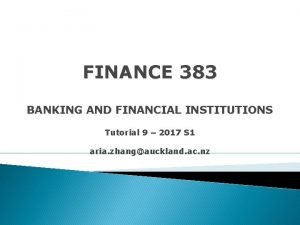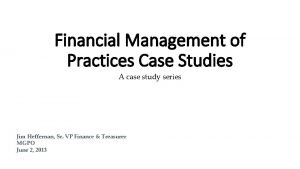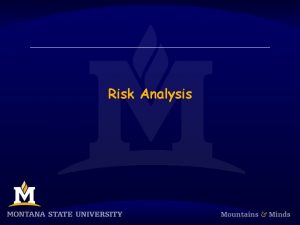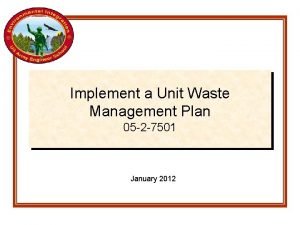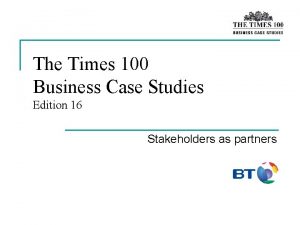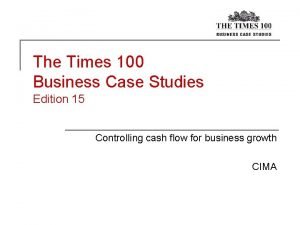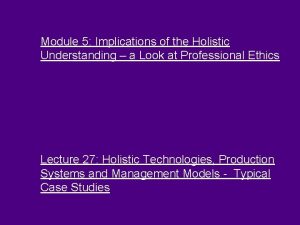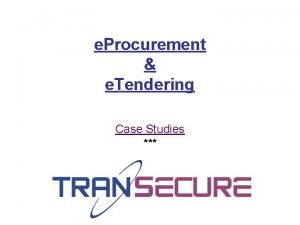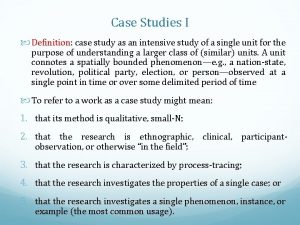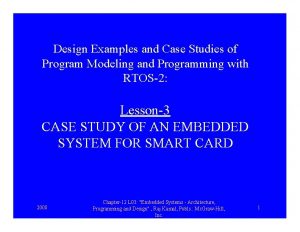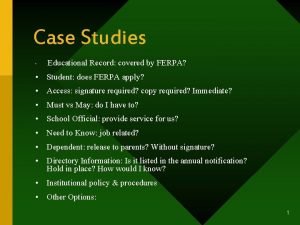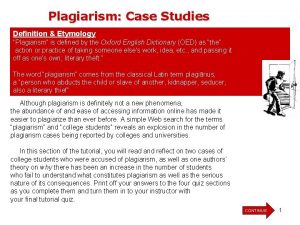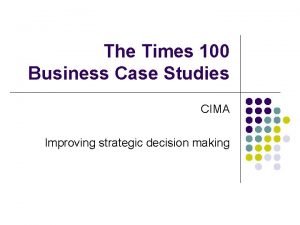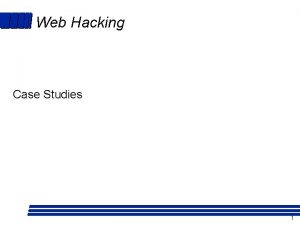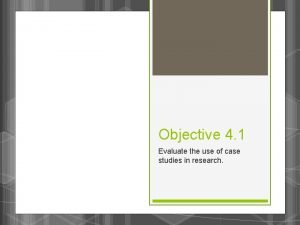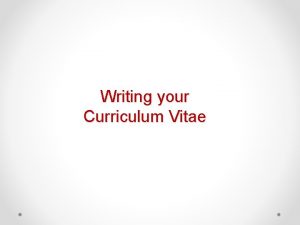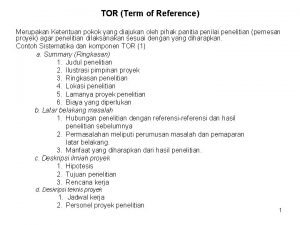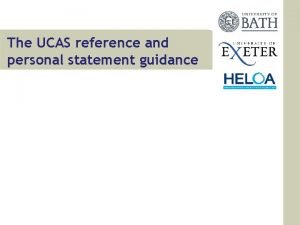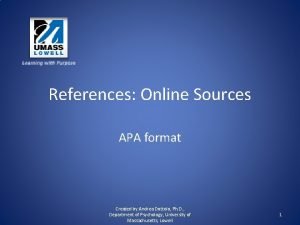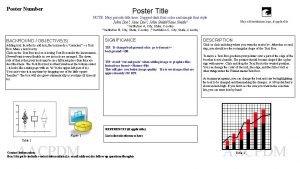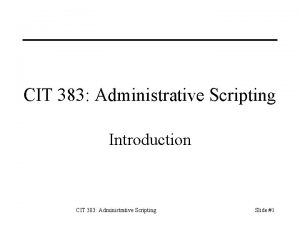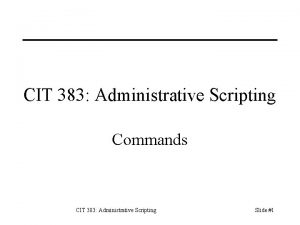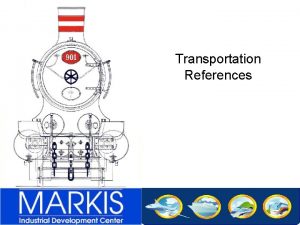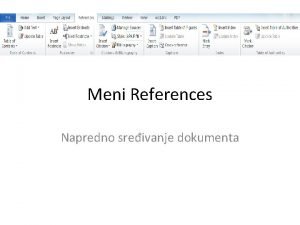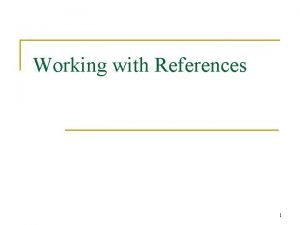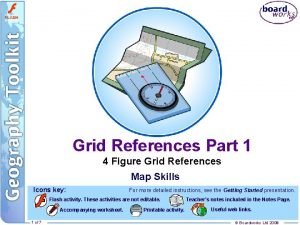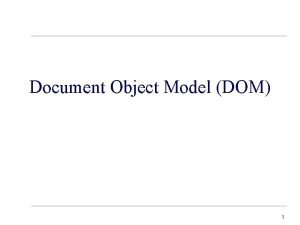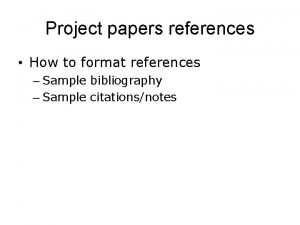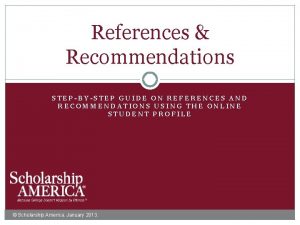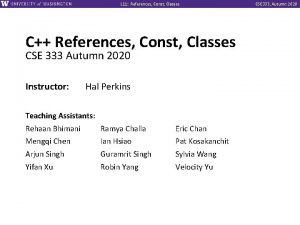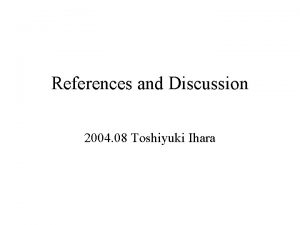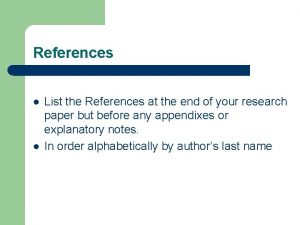Management 383 Writing Case Studies References Writing Case















































- Slides: 47

Management 383 - Writing Case Studies • References ¶ Writing Case Studies ò Kenneth Harling and Emmy Misser ò Wilfrid Laurier University, 1998 · Case Research: The Case Writing Process ò Michiel Leenders and James Erskine ò University of Waterloo, 1989

Outline • Why write cases? • Who Writes Cases • The Benefits

Why write cases? Researchers Lecturers Managers

Researchers • A means to an end - cases are well reasoned descriptions of real world situations. • To develop propositions which provide the basis for further quantitative research.

Instructors • Use cases to expose their students to relevant and timely issues

Managers • By participating in the case writing process gives them a chance to record their experiences and reflect on what really happened, and see their experiences crystallize into lessons for themselves.

Writing the Case Background Preliminaries Prewriting Wrapping up

Background • The goal of case writing is to produce clearly and vividly written documents.

Stage 1: Preliminaries • 1. Deciding when to write a case • 2. Getting leads • 3. Establishing contact

1. When to write the case? • Impetus for writing a new case can come from classroom needs(present cases are old) and/or business situations(new economic realities).

2. Getting Leads • Leads come from businesses, stories written in a newspaper, and even students

3. Establishing Contact • Establish informal contact with someone within the company ò is there a case to be written ò will the company participate • Try to contact people at the top information

3. 1 Meeting with Contact Person • first meeting ò formal approval ò clarify what the case will be about òwhat participation is required from the company òwhat will be done with the case

3. 2 Confidentiality • information will be held in the strictest confidence • that the only information released is in the case itself • submitted to the company for review before for use in teaching.

3. 3 Approval to Proceed • establish a working relationship ò a time line for the case writing process ò an overview of the information needed òa list of the people the case writer wants to talk to

Stage 2: Prewriting • 4. Collecting data • 5. Organizing the material

4. 1 Collecting Secondary Data • collecting relevant secondary data from numerous sources, including the business press, trade magazines, television and news reports. • the company's size, history, location, products, competition, etc.

4. 1. 1 Benefits of Secondary Data • Interviewed managers - important enough to do preparatory work • ask intelligent, probing questions • control of the interview

4. 2 Collecting Primary data • collected directly from the managers involved in the interview • primary data must be collected to support the application of particular concepts

5. 0 Organizing the Material • Organizing the material depends on a number of factors: ¶ Choice of Decision · Selecting the Central Character ¸ Selecting the Appropriate Data

5. 1 Choice of Decision • Selecting material to include in the case is a function of the focus and the point of view taken.

5. 1. 1 Focus • The focus is provided by the choice of decision and the decision-maker

5. 1. 2 Point of View • the stage of the decision-making process • whether the decision-maker is anticipating the decision

5. 2 Selecting the Central Character • Typically the central character is the person making the principal decision in the case, and the situation is described from his/her point of view

5. 3 Selecting the Appropriate Data • the focal decision and the point of view -the writer selects the data that reflect these choices • The data provided in the case fall into two types: organizational context and the decision itself

5. 3. 1 Organizational Context • provides students who are outsiders with a sense for the context within which the decision is being made

5. 3. 2 The Decision Itself • Sufficient data - students can discover patterns that make the case coherent and allow them to perform the desired analysis.

Stage 3: Writing • 6. Writing the case • 7. Writing the teaching note

6. 0 Writing the Case • The parts of a typical case is an introduction, contextual data, the body and a conclusion.

6. 1 Introduction • includes a clear statement about the decision from the perspective of the decision-maker, the principal character. The student is assumed to take on the role of this person. The introduction also provides a brief overview of the context in which the decision-maker operates. • Provide a sense of direction, and give the student a point of reference when reading the rest of the case.

6. 2 Contextual Data • Describes how the decision maker operates • The student will read this necessary though less exciting material when it is placed near the beginning of the case and before the dramatic action unfolds.

6. 3 The Body • the major part of the document because it is here that the decision situation is developed. • Several different logical patterns can be used for grouping material in this part: ò Provided by conceptual structures and models found in the various management disciplines. ò structures the material according to issues that may in turn be divided into sub-issues or smaller problems. ò a series of critical incidents, each of which builds toward the crisis because of its consequences.

6. 4 Conclusion • a brief summary of the situation and the options available or the issues the central character feels need to be tackled. By ending the case this way, the case writer provides the point of departure for the class discussion: in effect, a call-to-arms.

6. 5 Fine Tuning the Case • To create a fast-flowing story is essential to developing a sense of drama. • The danger of overwriting a case is ever present • The material which the writer decides to use for the case is best ordered chronologically whenever possible • The final aspect of fine tuning material is arranging data so that the students are drawn to their significance.

6. 5 Fine Tuning Continued • To avoid encoding unintentional bias, the writer is careful not to interpret data in the writing process • Using characters breathes life into the material, turning it into a story. • Characters also add the human side of management • Verb tense is an aspect of style that the case writer must consider when deciding how to present the story.

7. 0 Writing the Teaching Note • The teaching note is a document that complements the case. It presents lessons students can learn from the case and explains how the instructor can develop these lessons through class discussion of the case • The teaching note can be broken into eight sections

7. 1 Where and when to use the case? • This section suggests the type of courses the case is suitable for and where the case fits best in those courses (whether early or later on), what particular conceptual understanding it requires, and how parts of the case may be simplified so that it can be used in a variety of situations.

7. 2 Lessons supported by the case • Some lessons may simply be the application of conceptual models, and achievement of these is readily apparent. • Other lessons are less apparent as the case is taught but plain to see once exposed. • Most challenging are lessons that go beyond above the events in the case and yet grow out of reflection on aspects of the case.

7. 3 Introductory Comments • Knowing why a case is relevant helps the instructor select a case. • The instructor may choose to use this information either when assigning the case, or at the start of the case discussion to sell the students on the importance of what they will be examining.

7. 4 Synopsis of Case • This summary of the case can be used by the instructor as a preamble to discussing the case in class. • Identifies the decision-maker, what his or her task/concern/problem/dilemma is, and why the situation has arisen

7. 5 Study Questions • Questions that help students analyze the case and prepare for a discussion. • The specificity of the questions depends on the sophistication of the students. If they are seen as less sophisticated and less experienced, the questions tend to be numerous and specific. • With more sophisticated and experienced students, the questions can be as simple as, "What do you recommend the decision maker do and why? "

7. 6 Teaching Strategy • The detailed description of teaching strategies may start with a set of questions that will be used during the class discussion. • These may differ from the preparation questions that had been assigned, but they are the same in principle because their purpose is to direct students toward the lessons of the case and to provide a flow to class discussion.

7. 7 Optional • This section can include articles that expand on the concepts and analyses applied to the case, or further illustrations of the situation presented in it.

Stage 4: Wrapping up • 8. Obtaining a case release • 9. Test teaching the case • 10. Revising the case and the teaching note

8. 0 Obtaining a Release • A release is a signed statement that says that the case has been reviewed and can be used as a public document. The person signing the statement is usually the formal contact person in the organization the case has come from. • To protect the confidentiality of the company

9. 0 Test Teaching the Case • This is the only way to know whether the case works as intended • Revisions to the case may be necessary

10. 0 Revising the Case and the Teaching Note • The writer takes the deficiencies noted while test teaching the case and modifies both the case and the teaching note • Changes to the case include adding or deleting data, clarifying points that leave students confused or uncertain (unless the intent is to have them uncertain of the particular point), adding more clues and further processing information so that the students arrive at the desired lessons
 Cmpt383
Cmpt383 Ieee 383
Ieee 383 Finance 383
Finance 383 Case studies financial management
Case studies financial management Lister
Lister Segregation of hazardous waste
Segregation of hazardous waste Paradigm shift from women studies to gender studies
Paradigm shift from women studies to gender studies Best worst and average case
Best worst and average case Advantages of case studies in psychology
Advantages of case studies in psychology Times 100 business case studies
Times 100 business case studies The times 100 business case studies
The times 100 business case studies Holistic technology in professional ethics
Holistic technology in professional ethics Example of outbreak
Example of outbreak Advantages and disadvantages of case control studies
Advantages and disadvantages of case control studies Eu-gdpr-p
Eu-gdpr-p Human geography revision
Human geography revision Case studies of euthanasia
Case studies of euthanasia E procurement case studies
E procurement case studies Types of case studies
Types of case studies Definition of a case study
Definition of a case study The times 100 business case studies
The times 100 business case studies Nasa case study
Nasa case study Abo discrepancies
Abo discrepancies Chemistry ethics case studies
Chemistry ethics case studies Nspe board of ethical review cases
Nspe board of ethical review cases Goal2u
Goal2u Jmp case studies
Jmp case studies Case studies of rtos
Case studies of rtos Ferpa case studies
Ferpa case studies Social engineering case studies
Social engineering case studies Etymology of plagiarism
Etymology of plagiarism Digital marketing case studies 2012
Digital marketing case studies 2012 Blowfly girl deer pictures
Blowfly girl deer pictures Times 100 case studies
Times 100 case studies Ref impact case studies
Ref impact case studies Tanya carmichael
Tanya carmichael Food safety errors: case studies
Food safety errors: case studies Growth hacking case studies
Growth hacking case studies Case study base
Case study base Objective for cv
Objective for cv Term of reference adalah
Term of reference adalah Employer recommendation letter ucas reference example
Employer recommendation letter ucas reference example References apa format
References apa format How to put references on a poster
How to put references on a poster Five core principles of money and banking
Five core principles of money and banking Difference between reference and bibliography
Difference between reference and bibliography Example of intertext
Example of intertext Vague pronoun examples
Vague pronoun examples


